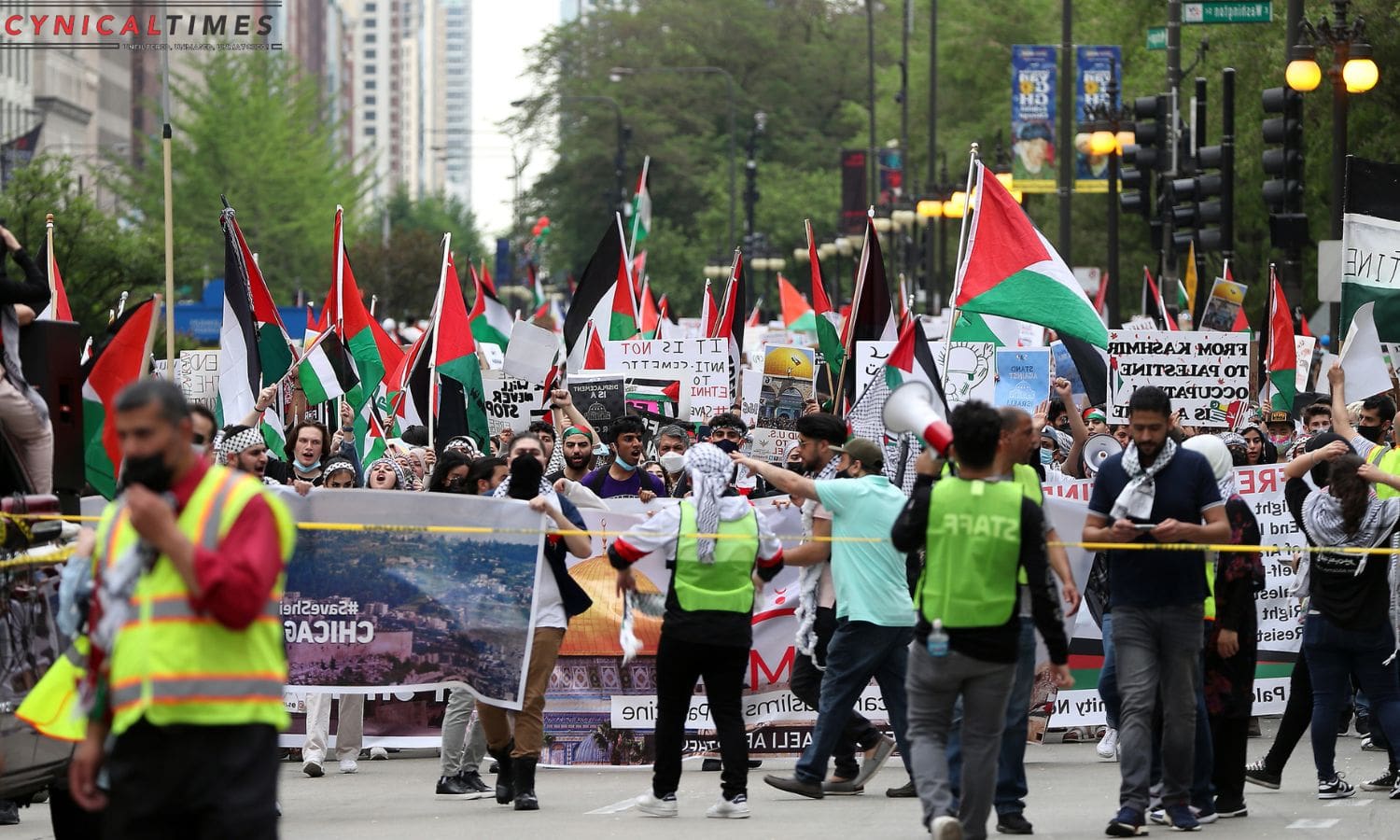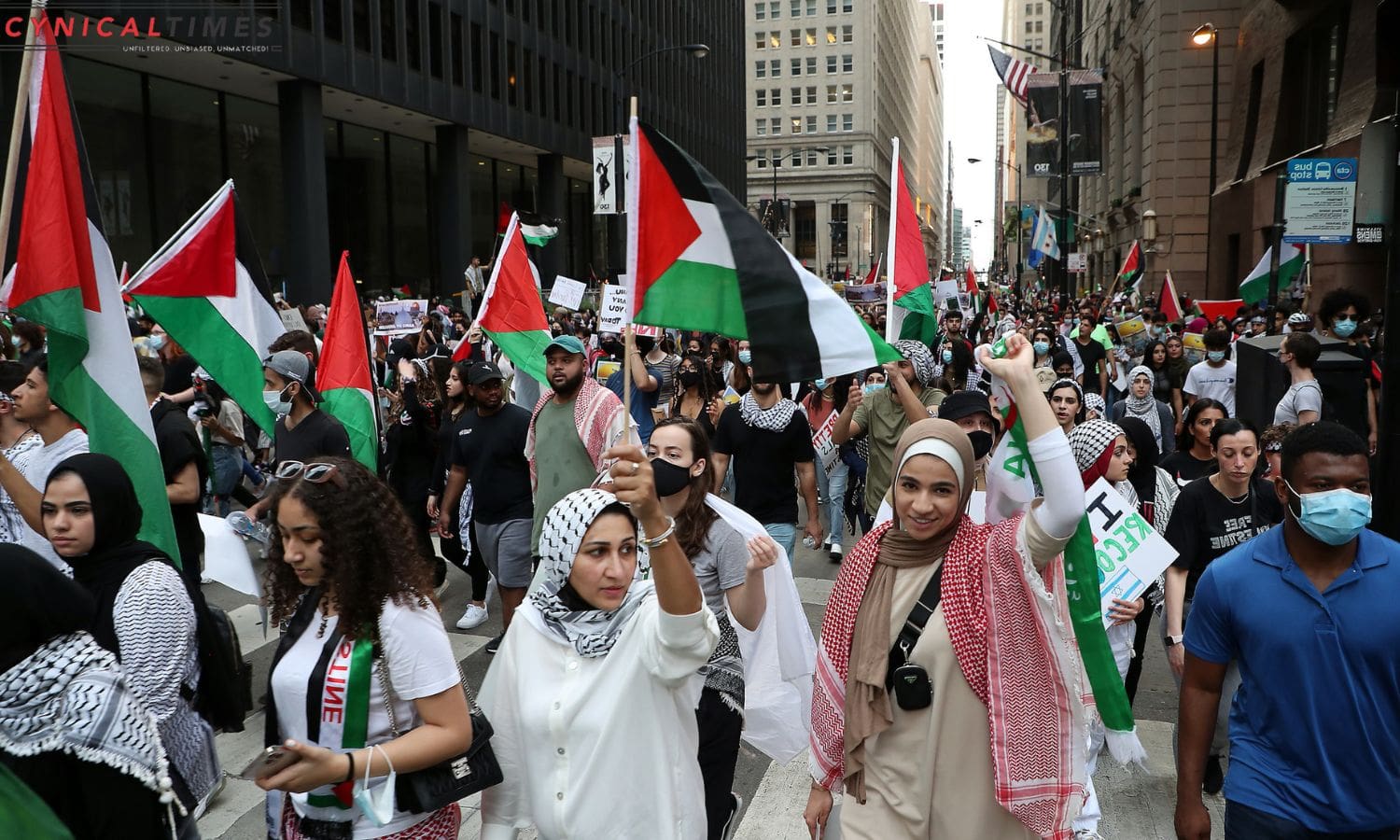Bay Area Palestinians Hopeful: In the midst of a four-day humanitarian pause in Gaza, the focus of many Bay Area Palestinians turns to their families enduring the conflict. Rami Sultan emphasizes the relief felt by those in Gaza, finally able to walk freely without constant fear from above. This respite, however, may not be sufficient for Sultan, who speaks of over 500 relatives evacuated to southern Gaza, seeking shelter in schools. The ceasefire offers a brief opportunity to breathe, access aid, and find water without the looming threat of immediate danger.
Friday witnesses a significant indigenous peoples march from Berkeley to Emeryville, where solidarity chants echo demands for ending the occupation and achieving a permanent ceasefire in Gaza. Victoria Montano, an organizer, draws attention to the suffering of relatives in Palestine, describing it as a genocide. Concerns rise about Israel potentially using the pause to restock weapons, hinting at the possibility of renewed conflict after the four days.
Suzanne Ali, a San Francisco-based community organizer, sheds light on the dire conditions faced by her family in Gazalimited food and water, lack of fuel, dysfunctional facilities, and no electricity. Despite the brief pause’s relief, skepticism lingers about its longevity and the deteriorating situation in the West Bank, emphasizing the ongoing challenges faced by Palestinians.


Also Read: The San Jose Real Estate Market Soars: A Week of High-Value Home Sale
The call for a humanitarian corridor to aid Gazans intensifies as winter approaches. Pro-Palestinian protesters make their voices heard at Westfield Valley Fair Mall in Santa Clara during the busy Black Friday, highlighting the ongoing violence even during a momentary pause. In San Francisco’s Union Square, demands for a permanent ceasefire resonate, with Wassim Hage emphasizing the urgency for elected officials to echo these calls.
The protest, led by youth activists, draws attention to the human cost of the conflict, with stories of loved ones lost to bombings in Gaza. As a thousand people gather in Union Square, the youth take charge, emphasizing the collective effort to keep the protest movement alive even on their days off.
Amid the Black Friday hustle, these activists strive to ensure that calls for a ceasefire remain in the public spotlight, creating moments of pause in retail spaces to bring attention to the ongoing humanitarian crisis.
Our Reader’s Queries
Does Palestine support Hamas?
It’s no surprise that Hamas is gaining more support, particularly among West Bank Palestinians. In fact, the backing for this militant group as a political party has surged by almost four times, from 12% to 44%, in just three months between September 2023 and December 2023.
Why doesn’t the US recognize Palestine?
The recognition of Palestine is a complex and politically sensitive issue. The US position on this matter is influenced by various factors, such as its close ties with Israel, concerns about the political situation in Palestine, and disagreements within the international community.
Which countries support Palestine against Israel?
Nine of the G20 nations, including Argentina, Brazil, China, India, Indonesia, Russia, Saudi Arabia, South Africa, and Turkey, have acknowledged Palestine as a state. However, only Indonesia and Saudi Arabia have officially recognized Palestine. On the other hand, ten G20 countries, such as Australia, Canada, France, Germany, Italy, Japan, South Korea, Mexico, the United States, and the United Kingdom, have not yet recognized Palestine as a state.
What are the borders of Palestine?
Nowadays, Palestine is typically referred to as a geographical area that is limited by the Jordan River to the east, the border between modern Israel and Lebanon to the north, the Mediterranean Sea (including the coast of Gaza) to the west, and the Negev, with its southernmost extension, to the south.

